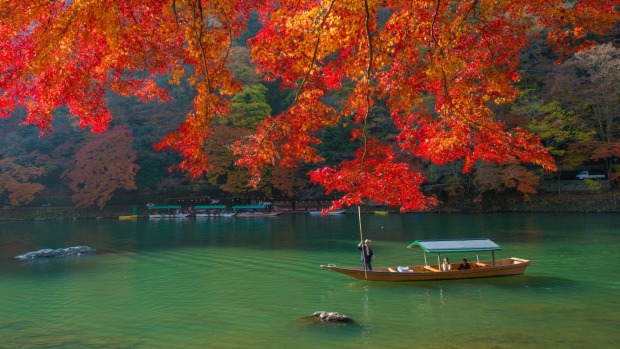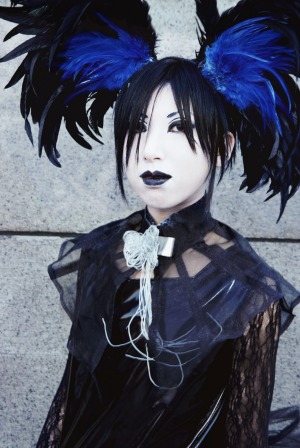
SPONSORED ARTICLE
Japan can be a baffling place. Its polite people are organised and decorous, yet nightlife is raucous, festivals frenzied and television game shows crazy and chaotic. Befuddled businessmen loosen ties and inhibitions in back-street bars, while Buddhist monks meditate on hillsides. Punk teenagers and kimono-clad grannies stroll the same streets. Moss-covered temples and monkey-filled forests provide further bewildering contrast to neon-winking cities and ear-splitting pachinko parlours. But it's this very exciting, contradictory cultural clash that makes Japan such a fascinating place for travellers. Add to this the many inaccurate stereotypes about Japanese society to make potential visitors even more nervous: this is supposed to be a land of rigid etiquette, incomprehensible culture and a looming language barrier.
REALITY Don't be intimidated by Japan's reputation for conformism and regulations. From Goths to Hello Kitty lookalikes, ladies in kimonos to Shinto monks, the Japanese are adventurous and varied, and know how to have a good time. Don't worry about misunderstandings either. Just press a button on those bewildering toilets with their sprays and blow dries, and prepare for surprises. Try vending machines, which sell everything from canned coffee to underwear. Enjoy a karaoke night: karaoke is Japanese for 'empty orchestra' and you'll have to provide the entire trumpet section. Let loose. The Japanese do, and you'll have a hoot.

REALITY There are such things as $150 melons in Japan, and ample opportunities to splurge. But canny travellers should ignore Japan's unfounded reputation for expense, as you'll have no problem finding good-value accommodation, transport and meals. Top hotels are similar in price to anywhere in Asia (around $250 and up per night), while budget chains such as Japan City Hotel Association and youth hostels abound. A mid-range room costs around $130, a dorm bed $30. You can get a good meal for $40, but tiny restaurants in Ginza, Tokyo's most chic district, serve lunches for $15. And there's no tipping.
REALITY Japan has superb bus and subway networks and efficient trains, and a special treat is a ride on a sleek bullet train, which hurtles you through the countryside at 300kmh. Getting about is rarely difficult. Uniformed, very helpful station staff are everywhere and will direct you to the right platforms and trains. Subway networks often have ticket-vending machines and on-train announcements in English. And in tourist cities such as Kyoto, buses that bring you to tourist sights have electronic signboards in English letting you know where to alight for major attractions.
REALITY Okay, true in part. The Japanese use three writing systems, and you won't understand anything, though some street and shop signs and many (but not all) train-station names are transliterated into the Latin alphabet. This doesn't mean you can't manage, however. Workers in major hotels speak English. In fact, all young (and many not-so-young) Japanese have studied English in school and, though they can be reticent to speak it, their innate politeness will cause them to try. Often their written English is much better, so get out your pen if necessary. Enjoy the confusion and the laughs; the Japanese are exceedingly helpful.
REALITY Nowadays Australians tend to think that winter is the time for a visit to Japan, what with the boom in skiing and snowboarding holidays there. But while hot and humid, the summers of June-August are eminently doable, too, while during the celebrated cherry-blossom season (late March to early April) parties spread under pink trees, illuminated by evening lanterns. November is perfect for hiking with autumn foliage unfolding in glorious Technicolour. Gardens and temples show off stunning Japanese favourites such as red maple and yellow ginko trees. Winter, of course, is the time for skiers, with some of the world's best powder snow. Sit in a hot spring with a view of snow-capped mountains, and a winter wonderland comes to life.
REALITY Many visitors focus on the pulsating life of Japan's big cities, but this isn't representative of the entire country. There's plenty of countryside offering a slower, more traditional look at Japan, with scenery ranging from tea plantations to volcanoes, beach-scalloped coastlines to rugged mountains. For example, the Izu Peninsula south of Tokyo has beaches, surf breaks, waterfalls and Mt Fuji as a backdrop. Hakone and Kamikochi are other easily accessible hiking areas. Even within big cities, it isn't hard to find surprisingly quiet districts and back streets, such as the traditional Yanaka district in Tokyo.
REALITY Japan's greatest pleasure is its ever-fresh, delightfully presented food. An easy option for budget eating is to head to department-store food halls for pre-made bento boxes divided into compartments, each with a tasty nibble accompanied by rice and pickled vegetables. Hole-in-the-wall eateries often feature counters at which the chef works, so you only need gesture to what you want. And though it's rare to find English menus in restaurants, there's no cause for fear. Japanese menus are sprinkled with useful photos, and plastic models of dishes decorate most restaurant windows. Point to what you fancy and you'll never starve.
REALITY Parts of Japan are certainly densely populated, and Tokyo-Yokohama ranks as the world's largest urban conurbation. Peak-hour subways are so packed that white-gloved guards may push the last passengers through the doors. However, Japan is an extraordinarily civil society, with virtually no shoving or littering, and phones switched to silent mode on trains, making crowds easier to bear. Plus, there are plenty of uncrowded Japanese destinations. The Kii Peninsula two hours from Osaka, for example, has great hikes past sacred temples nestled in forest, and the remote Tohoku region has rustic charm, misty islands and stunning national parks.
REALITY Yes, the tea ceremony is difficult to appreciate, and ikebana flower arrangement takes years to master. On a more practical level, visitors worry that they won't do the right thing while experiencing an elaborate kaiseki meal, or while floating about the fabulous hot springs (onsen) that the Japanese love so much. They fear they'll make some horrible faux-pas while staying in a traditional inn or ryokan, with its sliding doors and tatami mats. But guess what: plenty of Japanese have to be shown what to do during a tea ceremony too, and equally have no idea what's going on in a sumo ring. If you do something wrong, someone will likely let you know – and politely, at that.
REALITY The internet is full of warnings about arcane Japanese social rules, but the Japanese are quite prepared to overlook foreign eccentricities. You'll be right if you just remember not to tip, blow your nose, or talk loudly in public places, or raise your voice. Take your shoes off indoors, especially when entering a temple, or a hotel or restaurant with tatami mats. Beyond that, what's to worry about? The Japanese aren't the suited, robotic businessmen of the stereotypes, and are quite prepared to have a laugh – or at least ignore your misdemeanours. Enjoy. And have the time of your life.